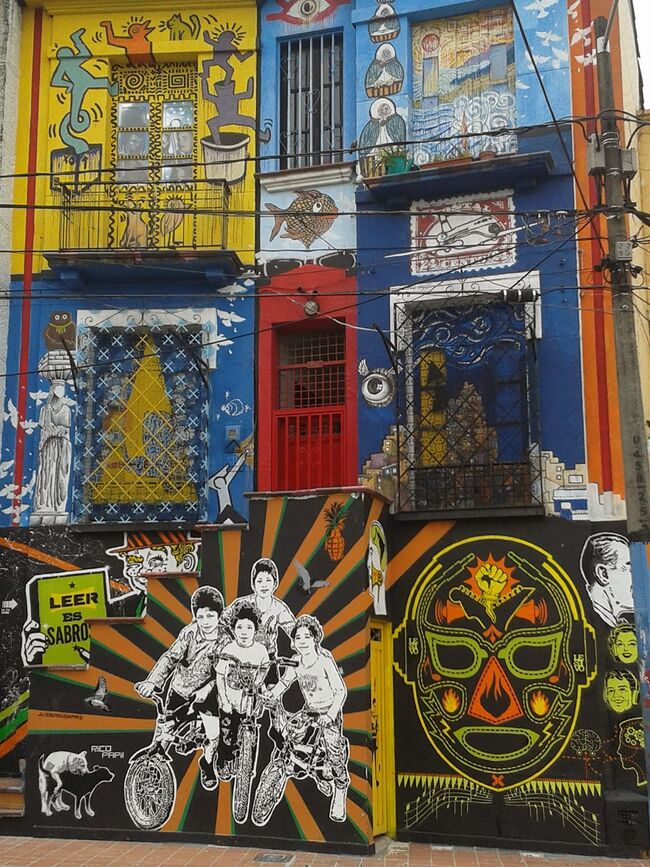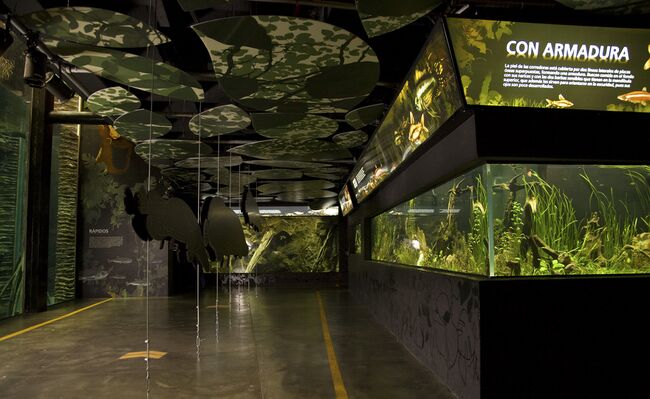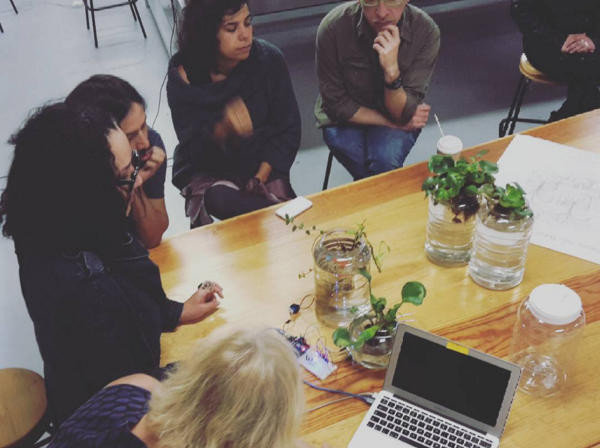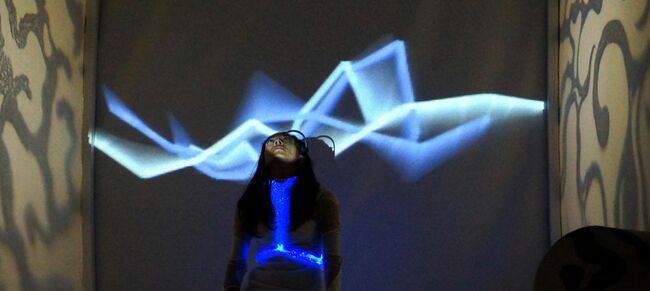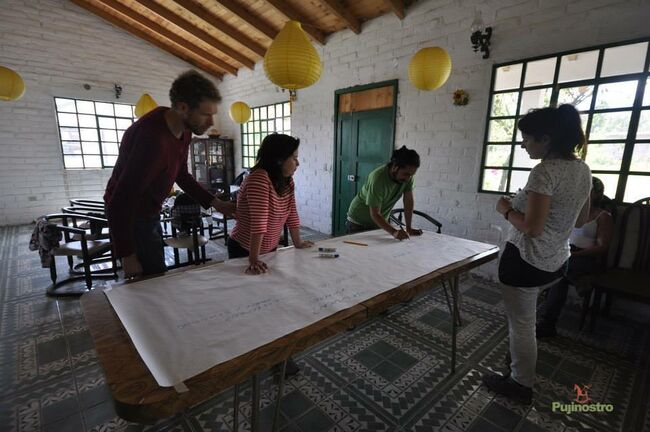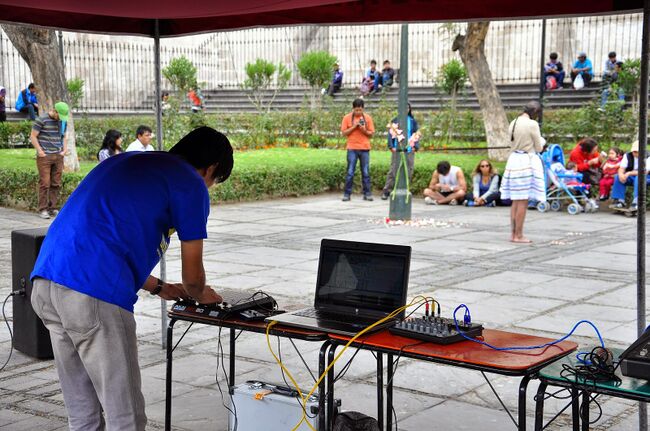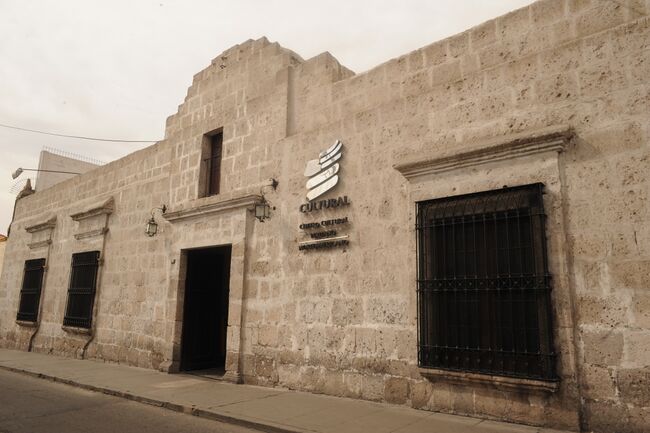TransPiksel 2021: Difference between revisions
| Line 111: | Line 111: | ||
'''TBD''', Constanza Piña (Colombia) <br> | '''TBD''', Constanza Piña (Colombia) <br> | ||
'''Cociclo''', Alexander Castonguay (Canadá)<br> | '''Cociclo''', Alexander Castonguay (Canadá)<br> | ||
In this performative workshop, the participants will assemble an electronic circuit that translates Carbon Monoxide (CO) concentrations into audible sound. The design consists of an Esp8266 based circuit, a CO sensor and a piezo element that enables the sonification, geolocalisation and visualisation of collected data on a community map. The project mixes artistic, environmental and social concerns and adheres to the design principles of open hardware and software: Everyone is invited to learn how the electronics and the code functions in order to be able to modify it. | |||
The workshop occurs over 5 hours in which the operations of the circuit and the code will be explained while assembling the circuit. The instructions will cover the basics of the esp8266 wireless chip, it’s interface with a mobile application for the geolocalisation and the visualisation on a map server. | |||
The group will then ride or walk in order to experience a ‘situationist dérive’ that transforms our understanding of the city and collects a lasting reminder of our paths in Bergen. Participants are invited to keep their Cocíclos in order to continue building a collective map online where a growing community of users can access the contaminants’ variations over time. | |||
Tech rider: | Tech rider: | ||
*Rechargeable Battery (6v 2A) (I can’t bring one on the flight over) | *Rechargeable Battery (6v 2A) (I can’t bring one on the flight over) | ||
| Line 120: | Line 127: | ||
A projector | A projector | ||
Access to the network is required | Access to the network is required | ||
Costs: | Costs: | ||
Costs of the components will be charged. (30$). | Costs of the components will be charged. (30$). | ||
| Line 145: | Line 145: | ||
10 people max. | 10 people max. | ||
'''Building simple instruments using guitar pedals''', John Hegre | '''Building simple instruments using guitar pedals''', John Hegre and '''Electrical signal feedback''', Gisle Frøysland<br><br> | ||
'''Electrical signal feedback''', Gisle Frøysland<br> | |||
Workshop: | |||
During the workshop the Norwegian duo of musicians: John Hegre and Gisle Frøysland will present the possibility of using the electric guitar during music improvisations. | |||
Workshop participants will learn how to combine analogue and digital technology, how to work in parallel in the two environments, how to use musical instruments (for example, the guitars) and audio devices to enrich recordings and also how to control them using digital tools to create interesting effects. At the end of the workshop a post-workshop show will be organized, during which each participant will be able to use the newly acquired knowledge. | |||
1. How to pimp your guitar with cheap electronics. Repurpose and expand the audio range of your guitar by integrating it with electronic toys, synthesizers or other cheap electronics. | |||
2. How to work with feedbackloops and build simple instruments using guitar pedals. | |||
Participants should bring their own guitar and electronics. | |||
Tech rider: | |||
- small sound mixer and sound system | |||
- video beamer for the workshop | |||
- similar for the perfo but with a P.A. | |||
'''Solar kinetic sculptures''', Egil Paulsen<br> | '''Solar kinetic sculptures''', Egil Paulsen<br> | ||
'''CrisisRus''', Maite Cajaraville<br> | '''CrisisRus''', Maite Cajaraville<br> | ||
Revision as of 20:00, 15 March 2016
PikseLatam
Four days of workshops, exhibitions, audiovisual concerts and a BioARt Lab with international and local artists working on art and technology with a special focus on bioart, enviromental sciences and DIY electronics to be held in Arequipa (Perú), Quito & Pujili (Ecuador) , Mexico D.F. (MX) and Medellín (Colombia).
August - September 2015
Keywords
sound art, sound installation, video research, interactive video, video performance, interactive installation, stand alone video loop (pikselsavers), textile gadgets, DIY BioHacking, visual programming and live coding.
Partners
Colombia Museum of Modern Art – Jorge Barco, http://www.elmamm.org/
Platohedro - Juan Jaramillo, http://platohedro.org/
Colaboratorio, Parque Explora - Camilo Cantor http://www.parqueexplora.org/colaboratorio
Mexico Autonomous University of Mexico - Maria Antonia González, http://www.artemasciencia.com/
Bioscénica - Minerva Hernández, http://bioscenica.mx/
Ecuador CAC, Centro de Arte Contemporáneo - José Luis Jácome y Tania Navarrete, http://www.centrodeartecontemporaneo.gob.ec/
Pujinostro - José Luis Jácome y Tania Navarrete, https://residenciadeartistaspujinostro.wordpress.com/
Perú Asimtria - Marco Valdivia, http://asimtria.org/ Centro Cultural Peruano Norteamericano, http://www.cultural.edu.pe/
Project Description
Piksel is organizing with its partners Piksel Latam, a South American tour comprising 4 countries: Mexico, Perú, Colombia and Ecuador. Our partners are museums, artist-run organisations and other non-profit cultural institutions.
Four days of workshops, exhibitions, audiovisual concerts and a BioARt Lab with international and local artists working on art and technology with a special focus on bioart, enviromental sciences and DIY electronics.
Piksel Satellites will be held in Arequipa (Perú), Quito & Pujili (Ecuador) , Mexico D.F. (MX) and Medellín (Colombia).
The Piksel curatorial team (Maite Cajaraville & Gisle Frøysland) have chosen a representative group of artists and works from Piksel Festival participants in order to present the most innovative artistic research on new and emerging technologies based on openness and free cultural practice.
International group of artists: Egil Paulsen (NO), Gisle Frøysland (NO), John Hegre (NO), Alexander Castonguay (CA), Maxim Demancour (CA), Maite Cajaraville (ES), Servando Barreiro (ES), Cristian Delgado (MX) and Constanza Piña (CL).
The works range from sound art, sound installation, video research, interactive video, video performance, interactive installation, stand alone video loop (pikselsavers), textile gadgets, DIY BioHacking, visual programming and live coding.
At each city/country, a group of local artists will be selected from an open call using Piksel festival management software which includes artists automatically at the growing artists database. Curatorial tasks will be shared with local curators and directors.
Curators Gisle Froysland (Norway), Maite Cajaraville (Spain), Marco Valdivia (Perú), Camilo Cantor, Juan Jaramillo and Jorge Barco (Colombia), José Luis Jácome y Tania Navarrete (Ecuador), Maria Antonia González, Minerva Hernández (Mexico).
PIKSEL Latam events, acting as a pilot project, aim to establish a longlasting collaborative network in South America. The goal of the project is to establish a rhizomatic network of interconnected nodes to work with in the next years.
August - September 2015
Curatorial text
The development, and therefore use, of digital technology today is mainly controlled by multinational corporations. Despite the prospects of technology expanding the means of artistic expression, the commercial demands of the software industries severely limit them instead. Piksel is focusing on the open source movement as a strategy for regaining artistic control of the technology, but also a means to bring attention to the close connections between art, politics, technology and economy.
With the emergence of internet and the democratisation of computers, the public are increasingly confronted with hybrid software and hardware, made by qualified artists using different titles: Artist programmer, software artist, digital artist or new media artist. These artists create their digital tools either by making them themselves or in close collaboration with programmers.
Piksel argues that the artists in all disciplines should have control over their own production. Therefore tools like open source software and open hardware is considered as the best practice. Internationally Piksel might be the most important forum for participants in this field, which more and more appear as a expanding movement with increased attention directed towards it.
Although coming from different economical and social backgrounds, Northern and Southern countries share a common interest in free culture: free and open source and technologies.
As curators and artists we aim to share our areas of interests: Do It Yourself (DIY) technologies, historical traditions of craftsmanship, environmental sciences, ancient biodiversity knowledge, synthetic molecular biotechnologies, understanding of plants, seeds and biochemistry traditions. All together intertwined with art practices.
As a pilot project, we expect to generate long lasting collaborations between our countries, our cultural associations and artists.
Exhibition Program
Exhibition PikselSavers, Several artists. Solar kinetic sculptures, Egil Paulsen (Oslo, Norway) Cociclo, Alexander Castonguay (Canada) From DNA to NSA, Maite Cajaraville (Spain) & Gisle Frøysland (Norway) TemporAir, Maxim Demancour (Canadá) TBD, Constanza Piña (Colombia)
Concerts & performances Hammer and chisel, Gisle Frøysland / John Hegre (Noruega) Artificial Stupidity, Servando Barreiro (España) TBO
Workshops TBD, Constanza Piña (Colombia) Cociclo, Alexander Castonguay (Canadá) Mapping with processing, Maxim Demancour (Canadá) Building simple instruments using guitar pedals, John Hegre Electrical signal feedback, Gisle Frøysland Solar kinetic sculptures, Egil Paulsen CrisisRus, Maite Cajaraville
DIY Biotechnology Lab DIY BioLab: How to mix molecular biology and electronics as new performances, Cristian Delgado
Technical needs Workshops
TBD, Constanza Piña (Colombia)
Cociclo, Alexander Castonguay (Canadá)
In this performative workshop, the participants will assemble an electronic circuit that translates Carbon Monoxide (CO) concentrations into audible sound. The design consists of an Esp8266 based circuit, a CO sensor and a piezo element that enables the sonification, geolocalisation and visualisation of collected data on a community map. The project mixes artistic, environmental and social concerns and adheres to the design principles of open hardware and software: Everyone is invited to learn how the electronics and the code functions in order to be able to modify it.
The workshop occurs over 5 hours in which the operations of the circuit and the code will be explained while assembling the circuit. The instructions will cover the basics of the esp8266 wireless chip, it’s interface with a mobile application for the geolocalisation and the visualisation on a map server.
The group will then ride or walk in order to experience a ‘situationist dérive’ that transforms our understanding of the city and collects a lasting reminder of our paths in Bergen. Participants are invited to keep their Cocíclos in order to continue building a collective map online where a growing community of users can access the contaminants’ variations over time.
Tech rider:
*Rechargeable Battery (6v 2A) (I can’t bring one on the flight over) * Battery charger (6v) or North american <-> Europe power converter 1 soldering iron for each 3 participants Tables and power for everyone Well-ventilated space Sufficient light for soldering A projector Access to the network is required
Costs: Costs of the components will be charged. (30$).
Participants: 10 maximum No experience necessary, only an interest in arts, free software and hardware, and/or social and environmental concerns.
Live projection mapping with aziz!LightCrew's Freeliner, Maxime Damecour (Canadá)
'alcFreeliner' is a open source projection mapping tool built to improvise animations on anything in the reach of a projector. Developed over the past 2 years, it has become quite full of features. But its interface is very rudimentary; it relies on a keyboard, mouse, and three lines of informational text. This workshop will be enough to make some very satisfying projections limited only by your imagination.
Please bring a computer with GNUlinux/osx/win and Processing 3.0 installed; a three-button mouse is also recommended.
Tech rider: 2 projectors, some random materials or interesting architecture and a few participants with laptops. 10 people max.
Building simple instruments using guitar pedals, John Hegre and Electrical signal feedback, Gisle Frøysland
Workshop: During the workshop the Norwegian duo of musicians: John Hegre and Gisle Frøysland will present the possibility of using the electric guitar during music improvisations.
Workshop participants will learn how to combine analogue and digital technology, how to work in parallel in the two environments, how to use musical instruments (for example, the guitars) and audio devices to enrich recordings and also how to control them using digital tools to create interesting effects. At the end of the workshop a post-workshop show will be organized, during which each participant will be able to use the newly acquired knowledge. 1. How to pimp your guitar with cheap electronics. Repurpose and expand the audio range of your guitar by integrating it with electronic toys, synthesizers or other cheap electronics. 2. How to work with feedbackloops and build simple instruments using guitar pedals. Participants should bring their own guitar and electronics.
Tech rider: - small sound mixer and sound system - video beamer for the workshop - similar for the perfo but with a P.A.
Solar kinetic sculptures, Egil Paulsen
CrisisRus, Maite Cajaraville
More about partners
Colombia / Medellín
Museum of Modern Art Ciudad Del Río Carrera 44 Nº 19A-100 Medellín – Colombia info@elmamm.org @mammedellin
Platohedro / artist-run association Calle 49 Barrio Buenos Aires, Medellín
Colaboratorio, Parque Explora Carrera 52 Nº 73 - 75 Medellín - Colombia + 57(4) 516 83 00
Mexico Autonomous University of Mexico Zona Cultural, Ciudad Universitaria México D.F., Delegación Coyoacán 04510
Bioscénica Several spaces Mexico D.F.
Ecuador CAC, Centro de Arte Contemporáneo Montevideo y Luis Dávila Barrio de San Juan Quito-Ecuador
Pujinostro / artist-run association Patoa Las Vacas, Pujili - Ecuador 59332841392
Perú Asimtria, artist-run association Arequipa
Centro Cultural Peruano Norteamericano Jr. Pichincha 436 Arequipa


